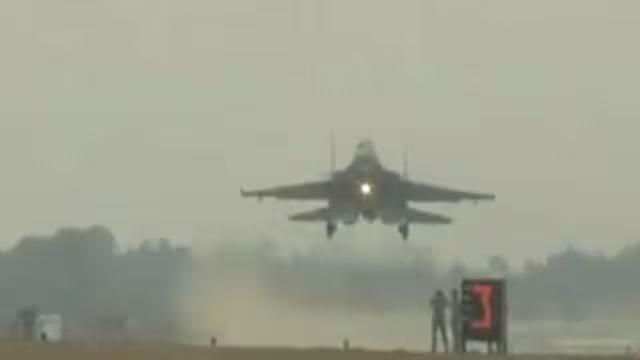
Why is IAF Conducting Fighter Jets’ Landing & Take-off Drill at Ganga Expressway in UP?
In a historic first, the Indian Air Force (IAF) recently conducted a series of take-off and landing exercises on the Ganga Expressway in Uttar Pradesh, showcasing the expressway’s potential as an alternative runway in times of war or national emergencies. The exercise, which included fighter jets like the Rafale, was a significant demonstration of the IAF’s capabilities and its commitment to ensuring the country’s air security.
The IAF’s exercise on the Ganga Expressway was unique in several ways. Firstly, it was the first time that the IAF had conducted take-off and landing drills on an expressway in India. Secondly, the exercise was conducted both during the day and at night, highlighting the expressway’s capabilities to handle both day and night landings of jets. This ability to operate 24/7 is crucial in times of crisis, when swift and decisive action is required to respond to emerging threats.
The Ganga Expressway, which stretches over 594 kilometers from Meerut to Prayagraj, is a modern, four-lane highway that connects the western and eastern regions of Uttar Pradesh. While it was built primarily as a transportation corridor, its sheer size and infrastructure make it an ideal location for an airstrip, should the need arise.
The IAF’s exercise on the Ganga Expressway was part of a larger effort to identify and develop alternative airfields that can be used in times of war or national emergencies. This approach recognizes that traditional airbases can be vulnerable to attack, and that having alternative landing strips can provide a vital lifeline for military operations.
The exercise involved a range of fighter jets, including the Rafale, which is one of the most advanced fighter jets in the world. The Rafale is capable of performing a range of roles, including air-to-air combat, ground attack, and reconnaissance. Its ability to operate from short runways makes it an ideal platform for the IAF’s needs, particularly in the context of the Ganga Expressway exercise.
The IAF’s exercise on the Ganga Expressway was not just about showcasing the expressway’s capabilities as an airstrip. It was also a demonstration of the IAF’s ability to adapt to changing circumstances and to respond to emerging threats. In today’s fast-paced and ever-changing security environment, the ability to think on one’s feet and to respond quickly to emerging threats is critical.
The exercise was also significant because it marked a new chapter in the IAF’s relationship with the Uttar Pradesh government. The IAF has a long history of working closely with state governments to develop and improve airfields and airstrips. This collaboration is crucial in ensuring that the IAF has the resources and infrastructure it needs to operate effectively.
The IAF’s exercise on the Ganga Expressway has sent a strong message to potential adversaries that the IAF is capable of operating from a range of platforms, and that it is committed to ensuring the country’s air security. The exercise has also demonstrated the IAF’s ability to adapt to changing circumstances and to respond quickly to emerging threats.
In conclusion, the IAF’s exercise on the Ganga Expressway was a significant demonstration of the IAF’s capabilities and its commitment to ensuring the country’s air security. The exercise showcased the expressway’s potential as an alternative runway during times of war or national emergencies, and highlighted the IAF’s ability to adapt to changing circumstances and to respond quickly to emerging threats. As the IAF continues to evolve and modernize, it is likely that we will see more exercises like this one, as the IAF seeks to stay ahead of the curve and to ensure the country’s air security.
Source:






